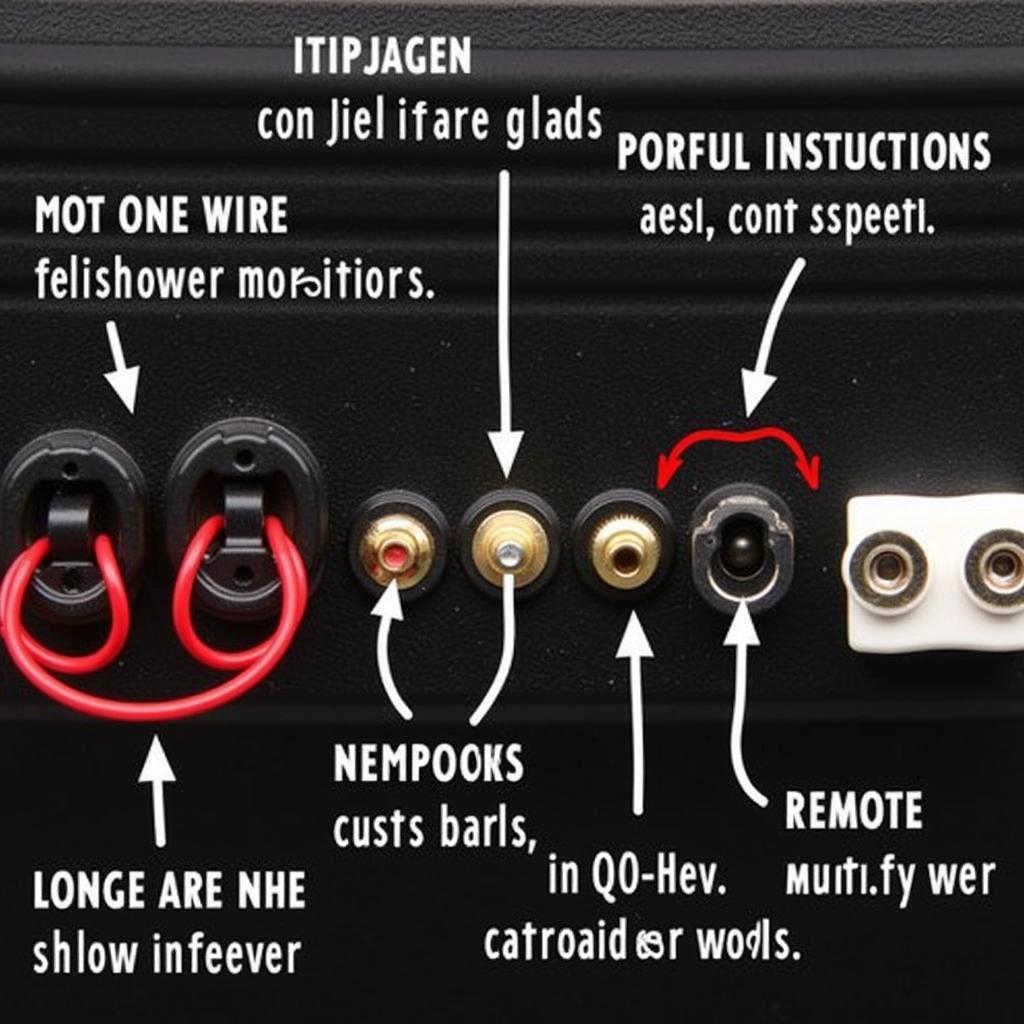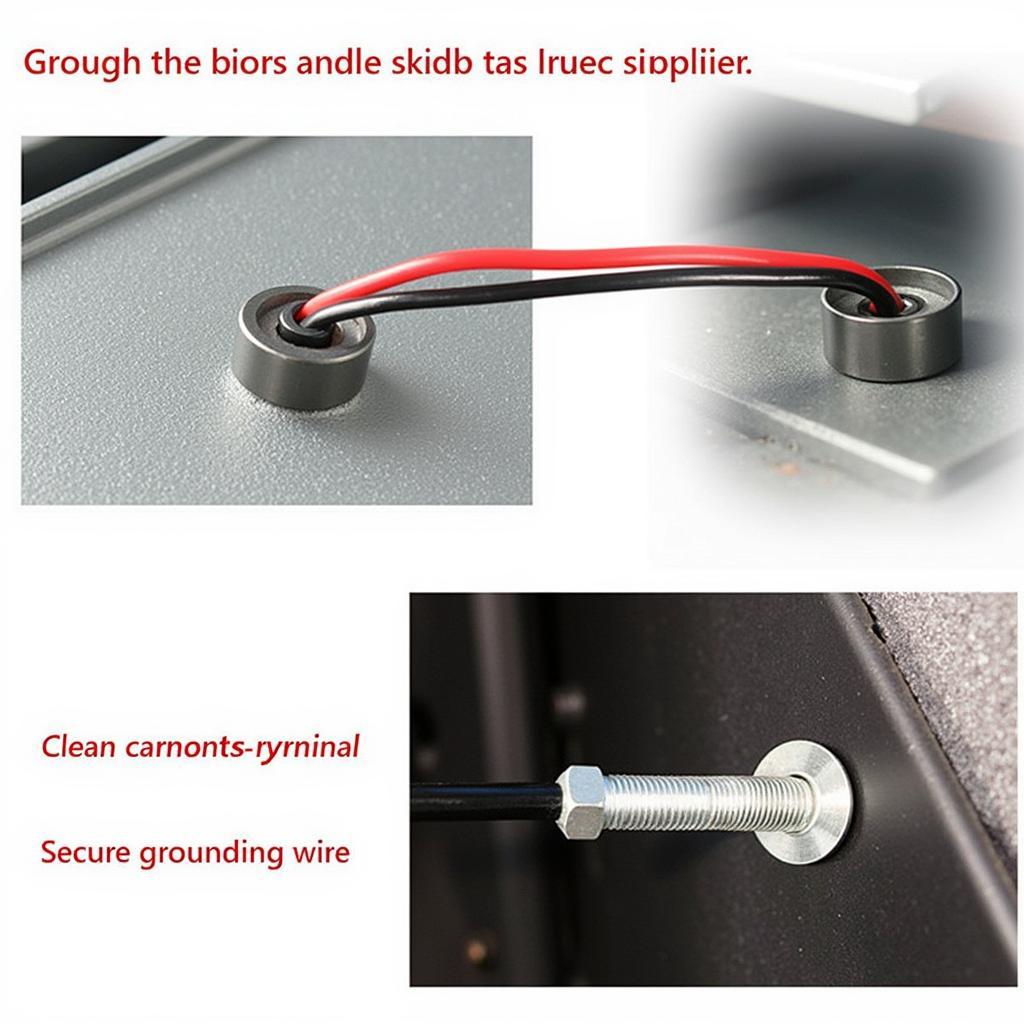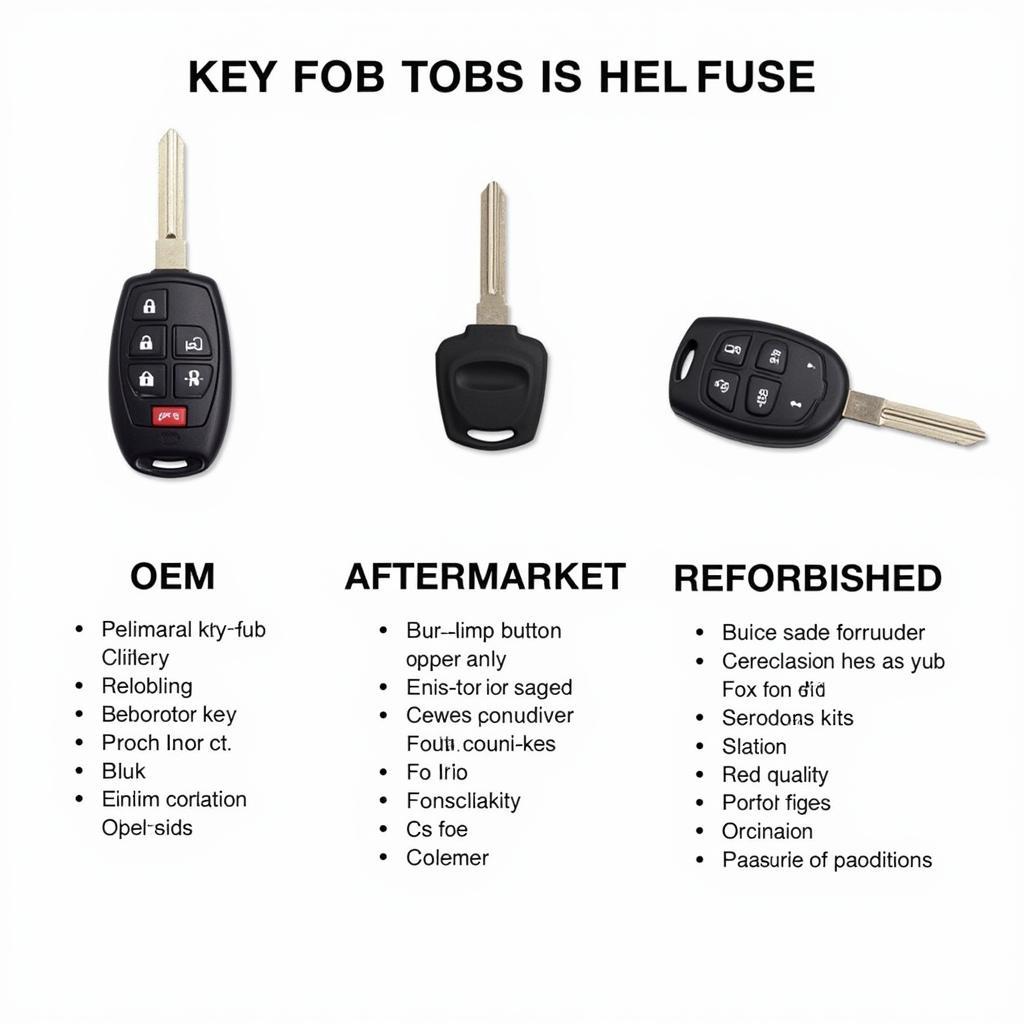Wiring up an amp to your car radio can dramatically improve your car audio experience. This guide will take you through the process, from choosing the right equipment to troubleshooting common problems. We’ll cover everything you need to know to get your system bumping. Learn how to wire up an amp to a car radio like a pro!
After carefully selecting your amplifier and other components, the next step is preparing your car for the installation. This involves gathering the necessary tools and ensuring you have a clear workspace. A well-organized installation process makes wiring up an amp to a car radio much smoother. Having the right tools, such as wire strippers, crimpers, and a multimeter, is essential for a successful installation. You’ll also need various connectors, including RCA cables and speaker wire. For those seeking a more integrated sound system, consider options like a car radio 2din bluetooth for enhanced connectivity and features.
Choosing the Right Amplifier
Before you start wiring, selecting the correct amplifier for your car radio and speakers is crucial. Consider factors like power output (RMS wattage), impedance, and the number of channels. Matching these specs to your speakers and head unit will ensure optimal performance and prevent damage to your equipment. For example, if you have a subwoofer, you’ll likely need a mono amplifier, while a four-channel amp can power multiple speakers.
 Power Connections for Car Amplifier
Power Connections for Car Amplifier
Gathering Your Tools and Materials
Having the correct tools and materials on hand simplifies the installation process. Besides the amp and wiring kit, you’ll need wire strippers, crimpers, electrical tape, a multimeter, zip ties, and a fuse holder. A wiring diagram specific to your car model is also highly recommended.
Preparing Your Car for Installation
Disconnect the negative terminal of your car battery before starting any wiring to prevent electrical shorts. Then, locate a suitable grounding point in your car’s chassis, ensuring it’s clean and free of paint or rust. This will ensure a solid ground connection for your amplifier, which is vital for optimal performance and minimizing noise.
Connecting the Power Wires
Run the power wire from the battery to the amplifier, using a fuse holder within 18 inches of the battery positive terminal. Connect the ground wire to the chosen grounding point. Use the appropriate gauge wiring for both connections to ensure sufficient power delivery. If you’re looking to upgrade your car’s audio system with modern features, consider a bluetooth radio with rear screen car stereo for a complete multimedia experience.
 Grounding the Car Amplifier
Grounding the Car Amplifier
Connecting the RCA Cables and Speaker Wires
Connect RCA cables from the pre-amp outputs on your car radio to the inputs on your amplifier. Then, run speaker wires from the amplifier outputs to your car speakers, paying close attention to polarity. Properly connecting the RCA cables ensures a clean signal transfer from the head unit to the amplifier, minimizing distortion.
Connecting the Remote Turn-On Wire
The remote turn-on wire tells the amplifier when to turn on and off with your car radio. Connect this wire to the remote turn-on lead on your head unit. Typically, this wire is blue and labeled “REM” or “Remote.” This small but crucial connection ensures your amplifier operates in sync with your car radio, saving power and preventing unnecessary wear and tear. For classic car enthusiasts, a retro car radio with bluetooth 1983 gmc truck offers the perfect blend of vintage aesthetics and modern technology.
Testing and Troubleshooting
Reconnect the negative battery terminal and test your system. Listen for any distortion or unwanted noise. If any issues arise, double-check all connections and consult your wiring diagram. Common problems include blown fuses, loose connections, or incorrect wiring. Methodically checking each component and connection will help isolate the source of the problem.
How do I choose the right gauge wire for my amplifier?
The wire gauge depends on the amplifier’s power requirements. Higher power amps require thicker gauge wire. Consult your amp’s manual for specific recommendations.
What is amplifier impedance?
Impedance is the resistance to the flow of electrical current. Matching the amp’s impedance to your speakers is crucial for optimal performance and preventing damage.
Can I install an amplifier myself?
Yes, with the right tools, knowledge, and patience, you can install an amplifier yourself. This guide provides a comprehensive overview of the process. For those looking to integrate a new sound system into a classic car, learning how to install a radio in an old car can be a valuable skill.
Why is my amplifier not turning on?
Check the fuse, remote turn-on wire connection, and power wire connections. A blown fuse or loose connection is a common cause for this issue. Thinking about adding Bluetooth connectivity to your classic ride? Check out options for a vintage car bluetooth radio.
Conclusion
Wiring up an amp to a car radio can seem daunting, but with careful planning and execution, it’s a manageable task. Following this guide and double-checking your work will lead to a rewarding car audio upgrade, enhancing your driving experience with powerful and clear sound. Enjoy your new and improved car audio system! Remember, always disconnect your car’s battery before starting any electrical work.

